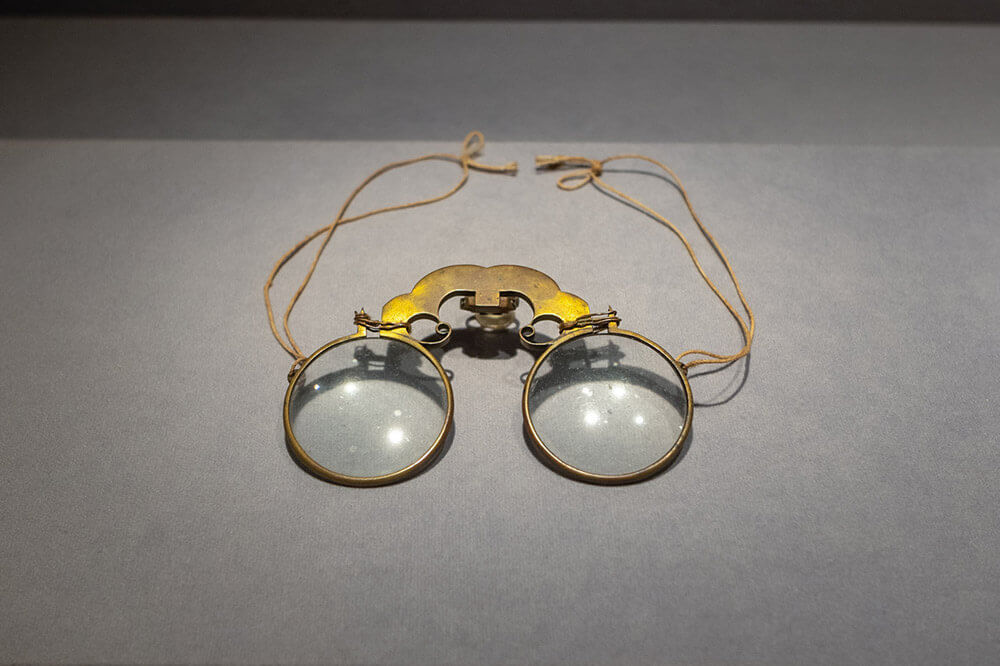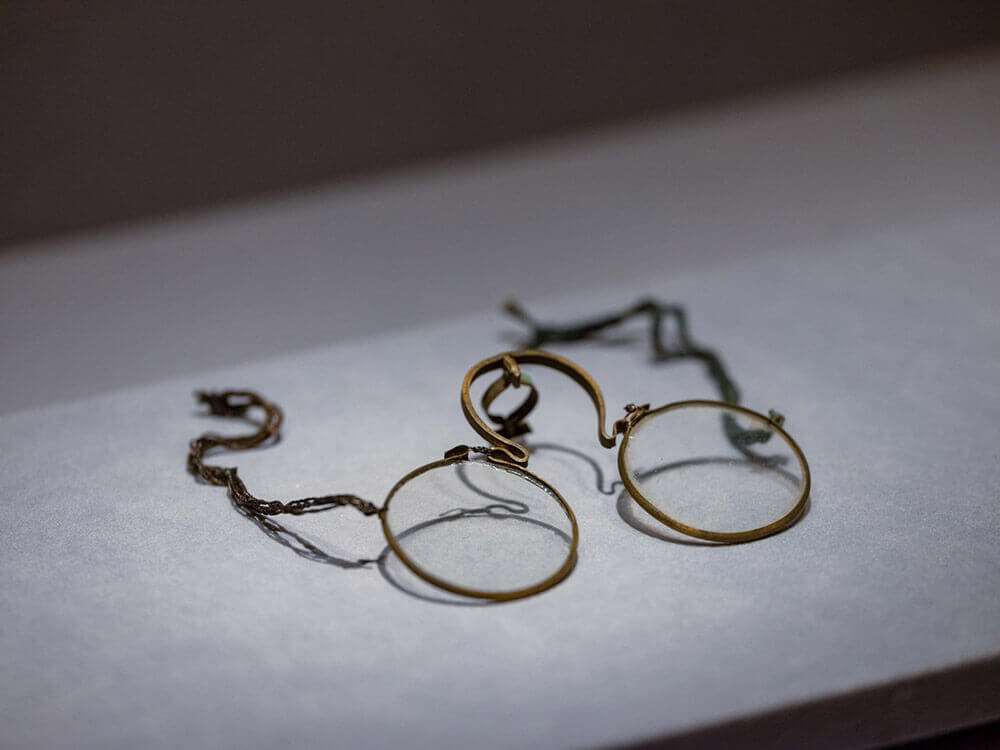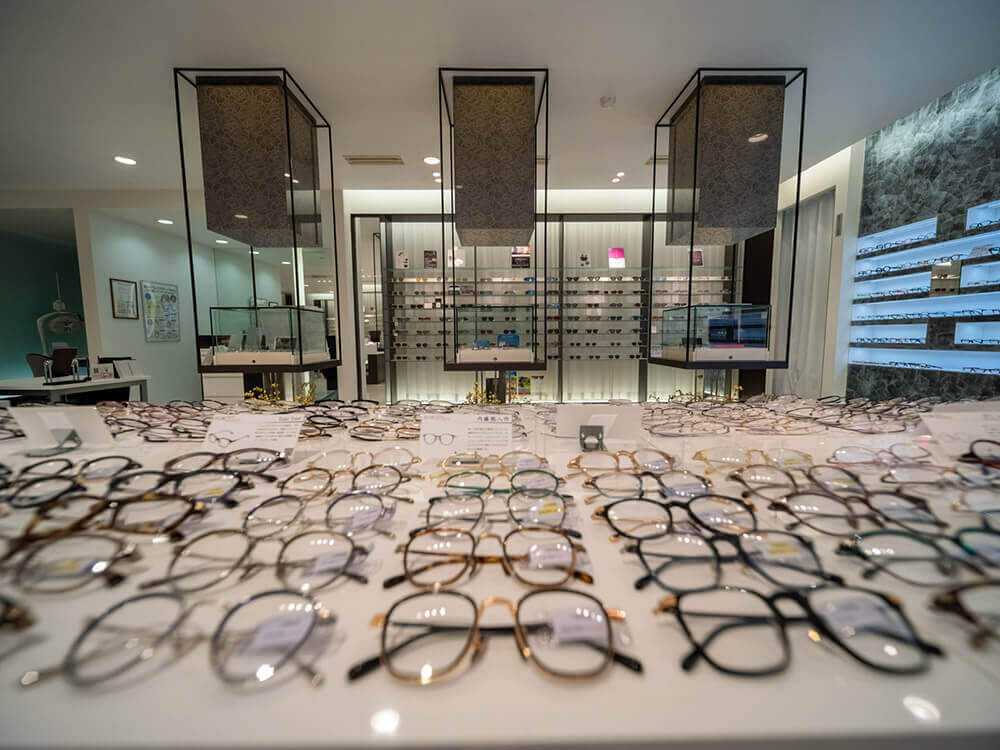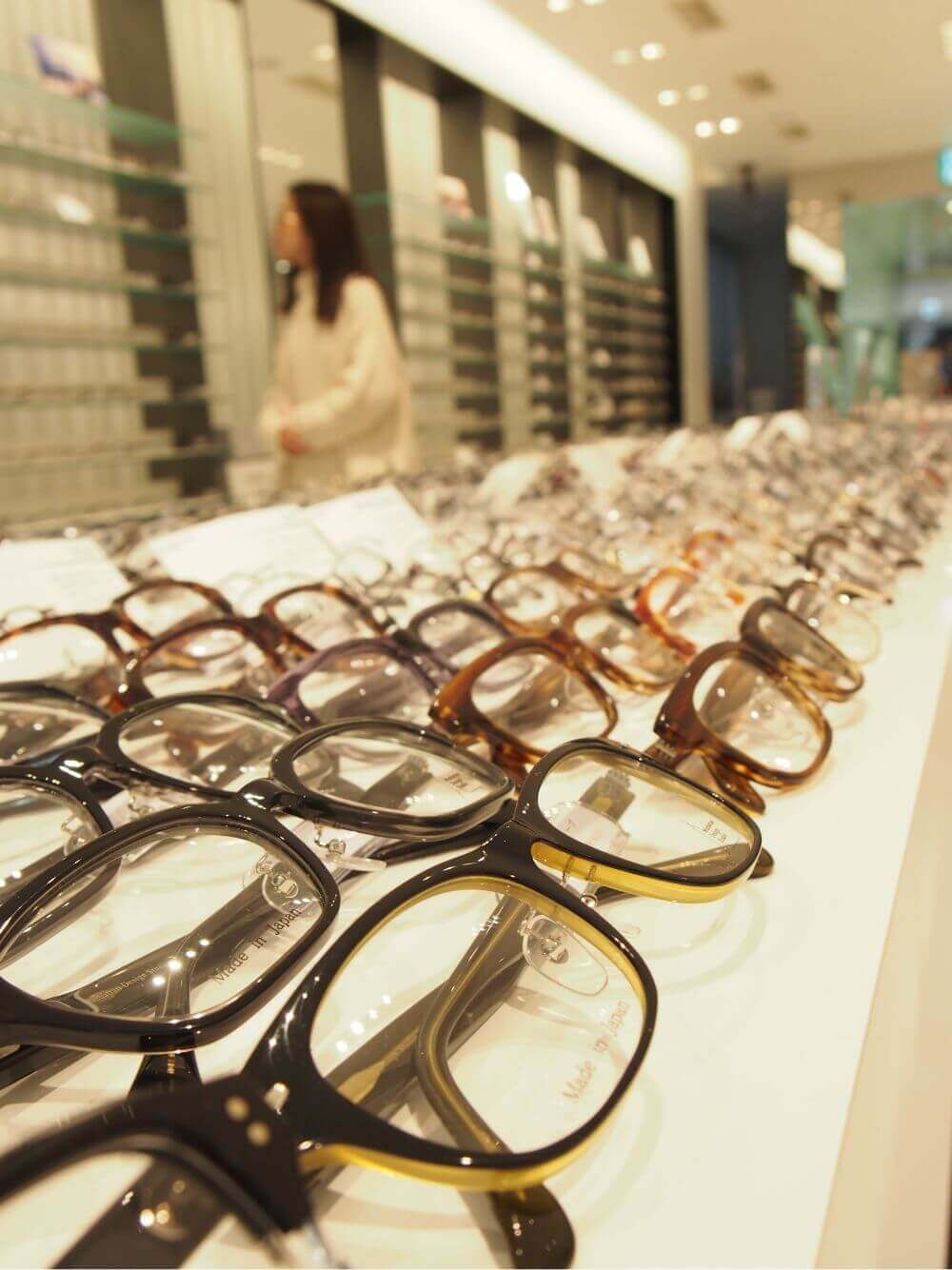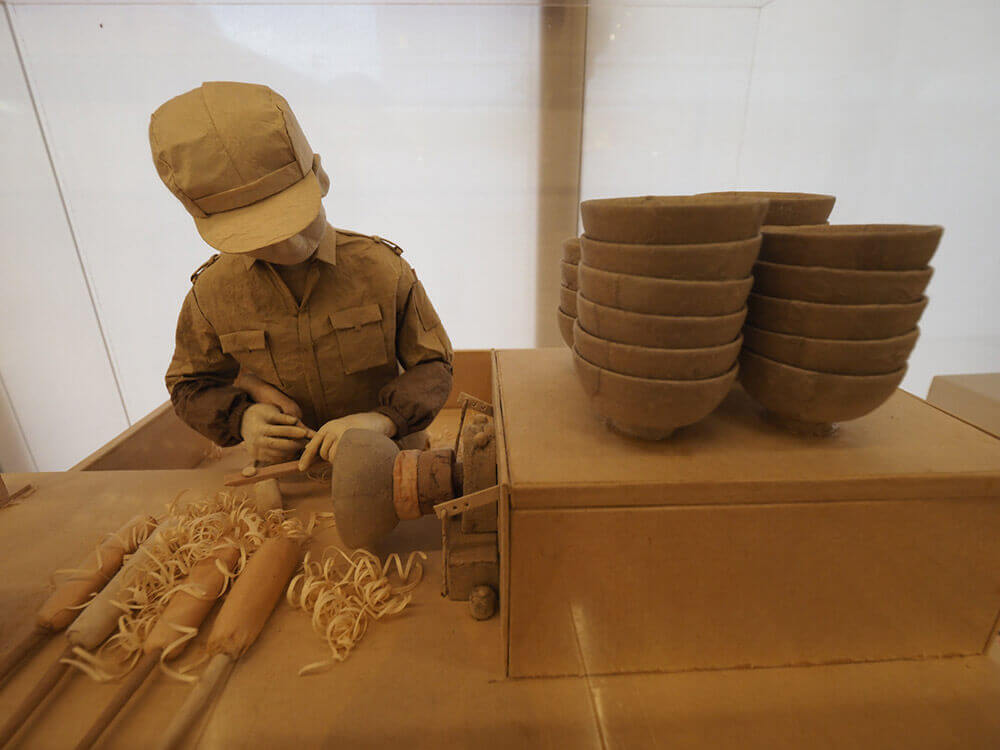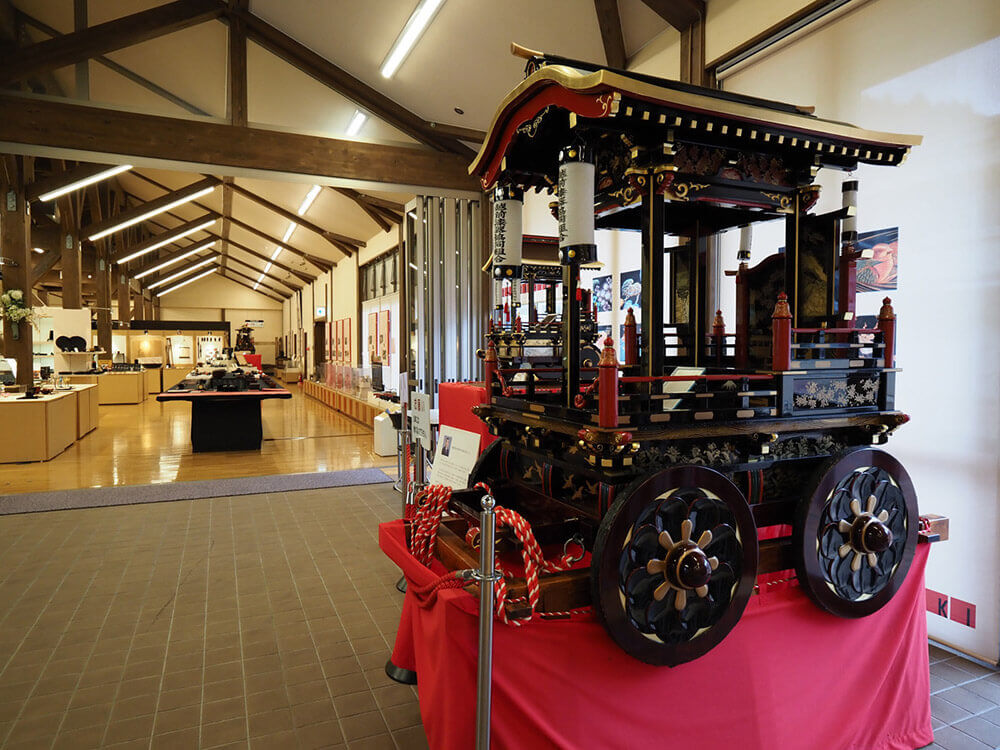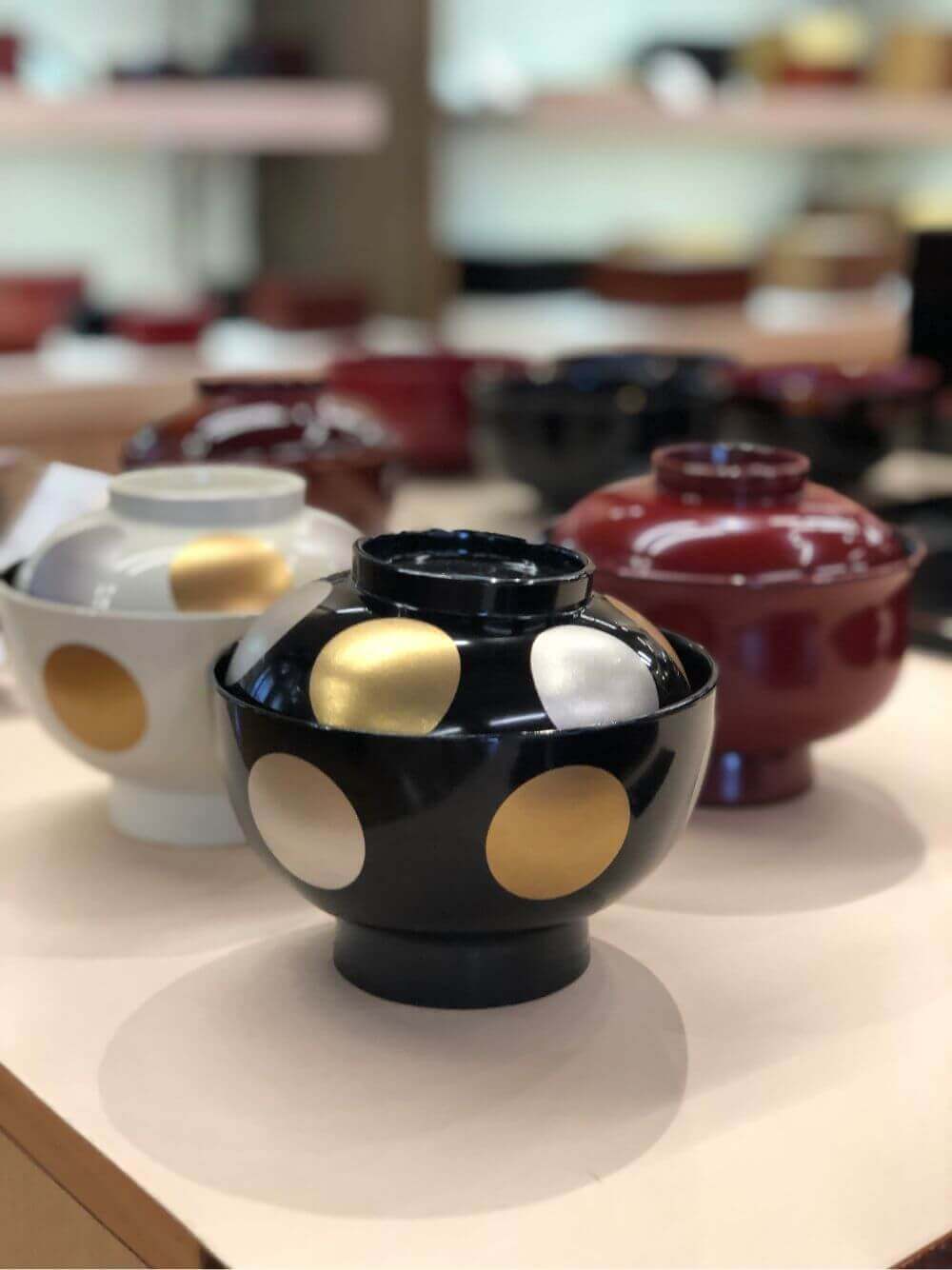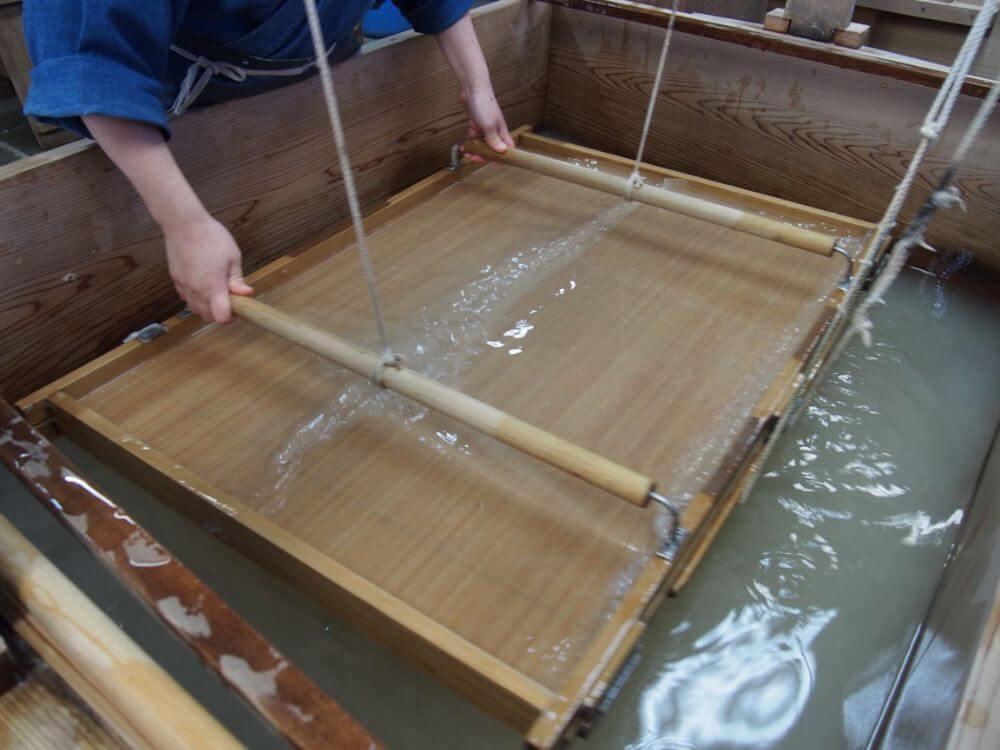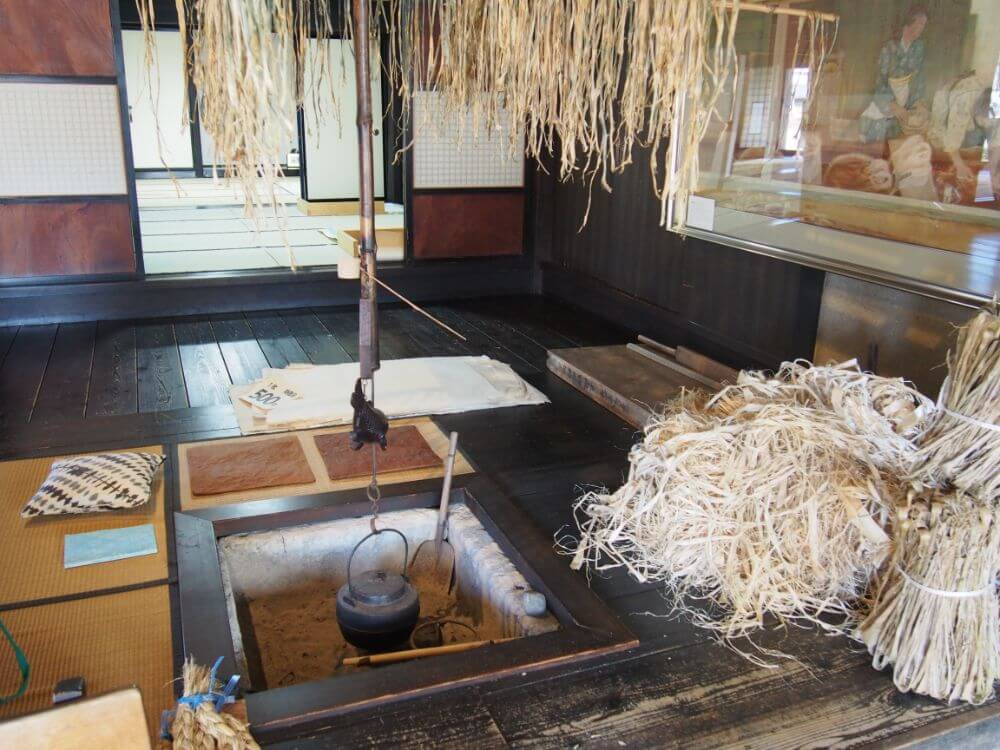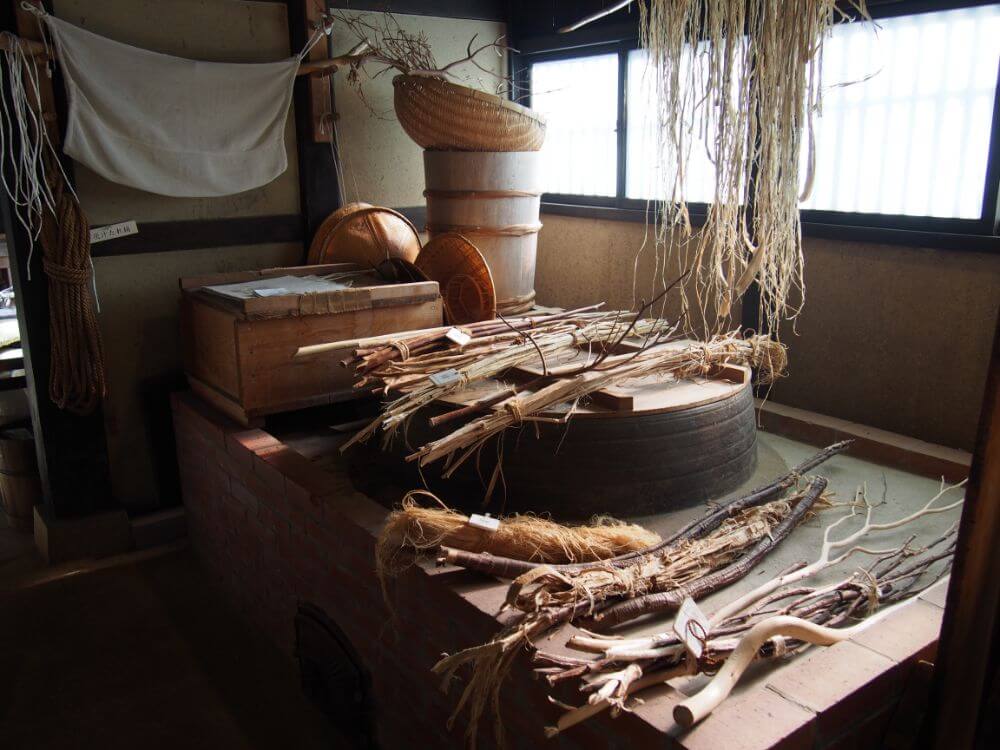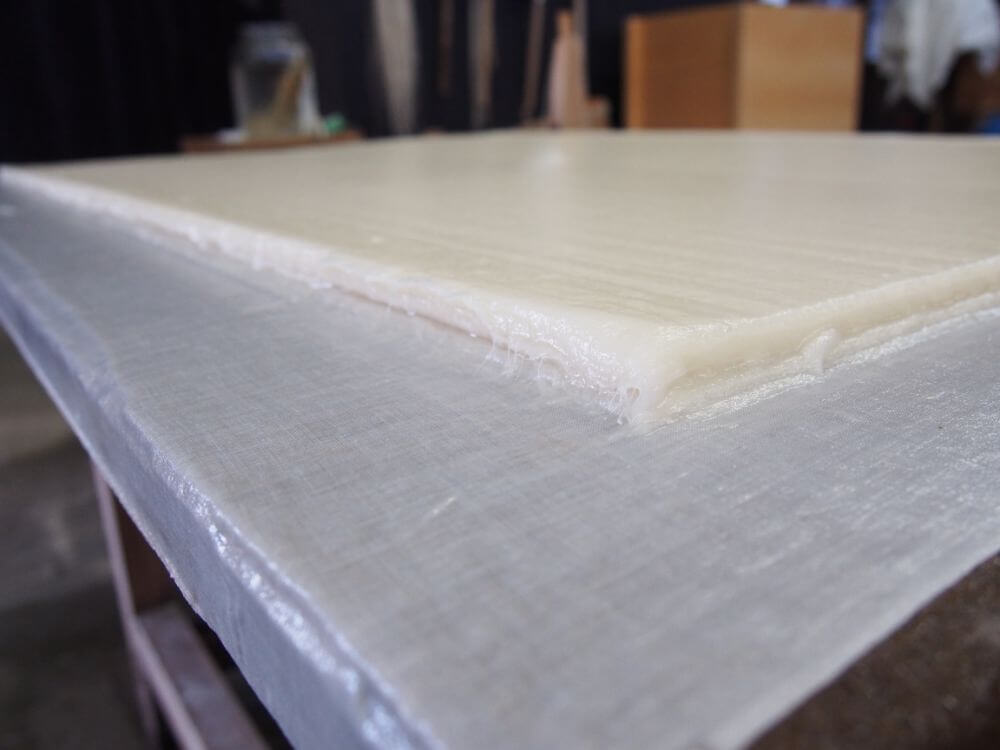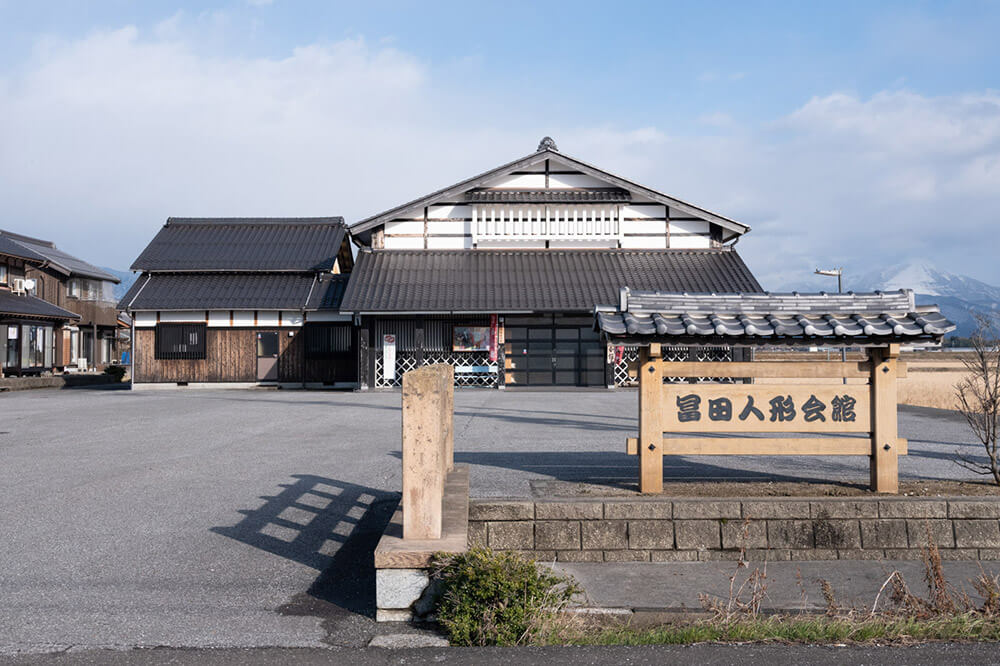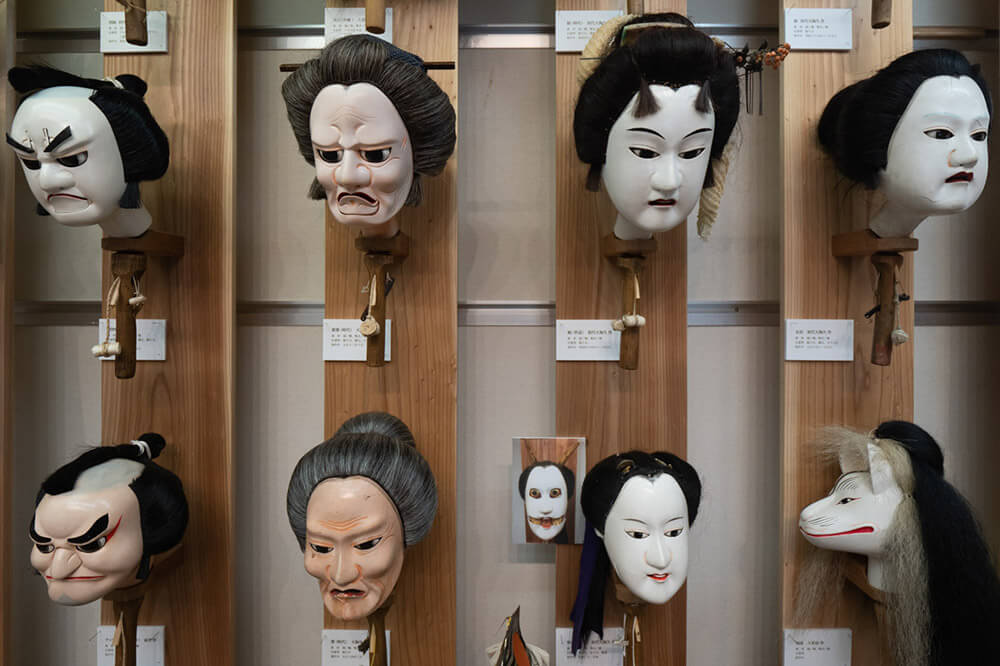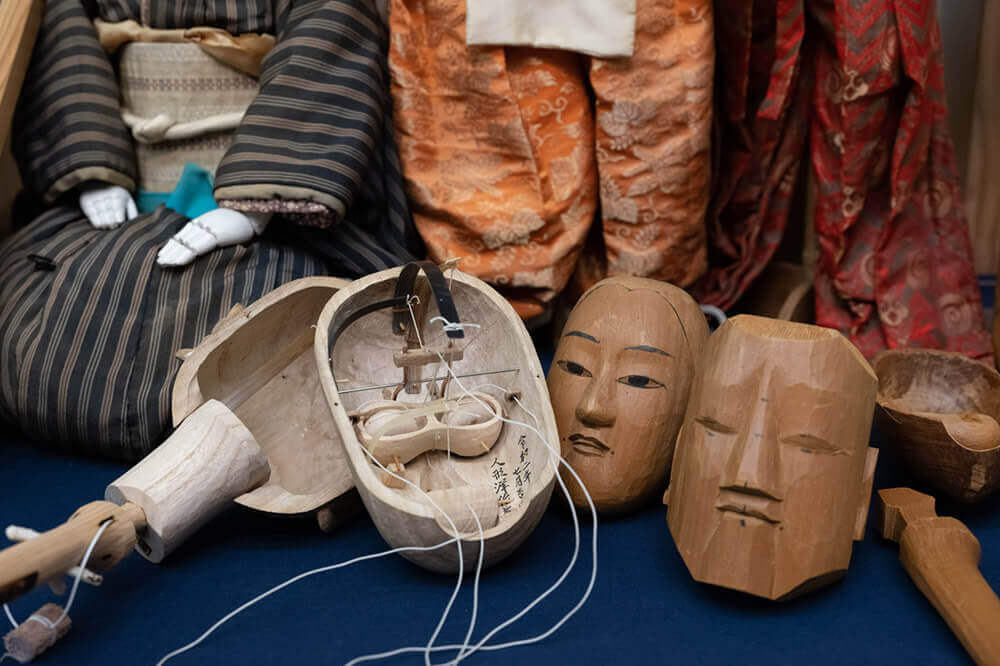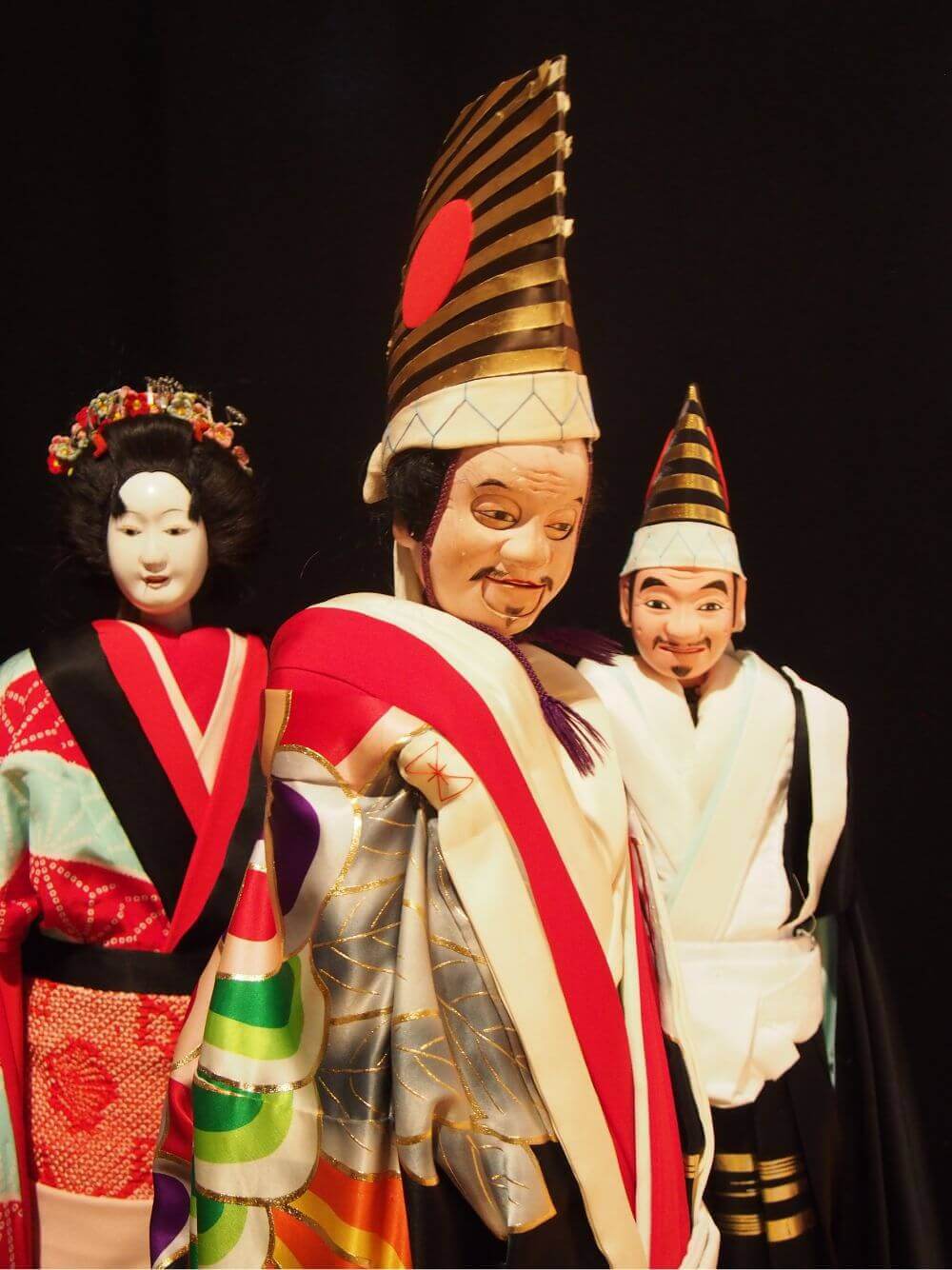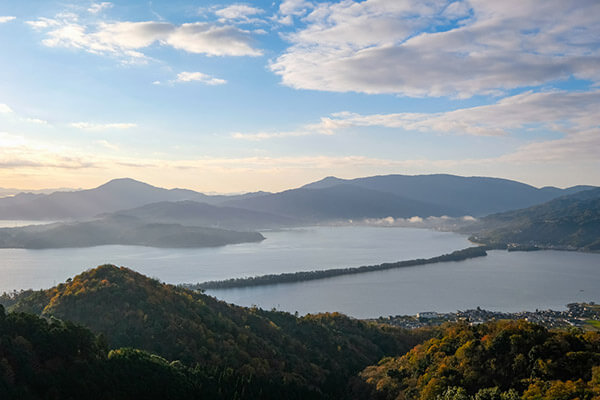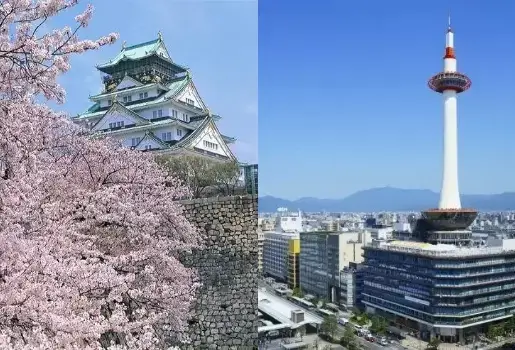FUKUI, EAST LAKE BIWA & MIE
Regions of Japanese Traditional Craftsmenship
Overview
This area is rich with traces of warring states' era culture, as well as of samurai and ninja from that time. There is a long history of trade and exchange with the ancient capital of Kyoto, and many craft traditions continue to be passed down. The area boasts many onsen (hot springs), countless waterfalls, multiple rivers. These abundant water resources encouraged the development of a rich variety of traditional crafts. The wisdom of master craftspeople continues to be passed down here, in this region of water, warriors, and tradition, including: armor-making, pottery, Shigaraki ware, Echizen washi paper, Echizen knives, Echizen lacquerware, and Sabae eyeglasses.
Many castles and remains are dotted around Lake Biwa. Among them are the remains of Hikone Castle. The culture and the moral choices of ninja, samurai, and of Bushido (the way of the warrior) continue to be learned about and passed down here. While samurais were warriors who followed Bushido, dedicating themselves to serving a single lord, ninjas were more akin to mercenaries, willing and able to work as spies. In Koka and Iga, both formerly home to ninja clans, you can discover ninja culture through museums, traditional houses fitted with typical ninja booby-traps, and live-actions performances.
Recommended Spots
-
 The ruins of a town, dubbed “Little Kyoto of the Hokuriku region”, that flourished during the Muromachi Period. The town was razed to the ground in the battles between the ruling Asakura clan and Oda Nobunaga, but was later excavated and is now designated a Special Historical Site. The site includes the ruins of the Asakura clan’s residence and of rock gardens, as well as streetscapes which give a glimpse into the lives of the samurai and townspeople who once resided there. Enjoy the sense of having travelled through time as you stroll through the idyllic scenery surrounded by beautiful mountains.
The ruins of a town, dubbed “Little Kyoto of the Hokuriku region”, that flourished during the Muromachi Period. The town was razed to the ground in the battles between the ruling Asakura clan and Oda Nobunaga, but was later excavated and is now designated a Special Historical Site. The site includes the ruins of the Asakura clan’s residence and of rock gardens, as well as streetscapes which give a glimpse into the lives of the samurai and townspeople who once resided there. Enjoy the sense of having travelled through time as you stroll through the idyllic scenery surrounded by beautiful mountains. -
 At this museum you can sense the power and prosperity of the Asakura clan, a daimyo family in the Warring States period that was based in the castle town of Ichijodani in Echizen. Through various exhibits, you will see that the area was once a leading city and learn about how its residents lived, as well as the battles that took place, and its ruins. You can also see closely the remains of stone paving discovered when the museum was constructed.
At this museum you can sense the power and prosperity of the Asakura clan, a daimyo family in the Warring States period that was based in the castle town of Ichijodani in Echizen. Through various exhibits, you will see that the area was once a leading city and learn about how its residents lived, as well as the battles that took place, and its ruins. You can also see closely the remains of stone paving discovered when the museum was constructed. -
For over 100 years Sabae City in Fukui Prefecture has been one of the world's leading eyeglass production centers, passing down traditional manufacturing methods to future generations. Over 200 processes are carried out by artisans and specialized factories to produce high-quality eyeglasses with high precision and long-lasting use.Audio Guide
-
Echizen lacquerware has a history of more than 1,500 years, and has been designated as a traditional craft product by the Japanese government. Echizen lacquerware is characterized by the subtle sheen of its lacquer and the use of deep, rich tones. It has long been prized by Japanese people as ideal for use at weddings and celebrations. Visitors to the Echizen Lacquerware Cooperative can learn about the history of lacquerware in the area, watch the production process, and browse through more than 1,000 superlative lacquerware items on sale.Audio Guide
-
Echizen boasts the biggest share of the luxury handmade washi (Japanese paper) market of any city of Japan. In particular, the Goka area of Echizen is home to many traditional paper-makers. The Echizen Washi Village is a 15 minutes walk from Goka and has much to offer: the Paper and Culture Museum, where visitors can learn about the history and significance of Echizen washi; the Udatsu Paper and Craft Museum, where visitors can watch craftspeople making washi; and Papyrus House, where visitors can try making traditional washi.
-
Tonda Ningyo is a traditional form of "Ningyo Joruri" (puppet theatre), some 180 years old and particular to the Kita-tonda area of Nagahama City. The tradition is said to have started when a troupe of Ningyo Joruri players, who had come from Awa (present-day Tokushima Prefecture) to put on some performances, left puppets and equipment behind in lieu of repaying travel expenses. Here you can discover the ensuing tradition of village locals performing Ningyo Joruri. You can also "meet" the puppets and see the stage equipment.Audio Guide
-
 Hikone Castle, completed in 1622, is one of Japan’s only 12 remaining original castles (castle towers). It is also known as Konki-jo, or Golden Turtle Castle, a name which comes from the fact that a statue of the goddess Kannon riding a golden turtle had formerly stood at the peak of Mt. Hikone, where the castle was built. The castle tower itself is a designated National Treasure, and multiple buildings on the castle grounds are also registered as Important Cultural Properties, such as the Tenbin Yagura turret and the Taikomon Yagura turret. The castle is a must-see in any season, whether flanked by cherry blossom, the lush green foliage of summer, the changing leaves of fall, or wintry snow.
Hikone Castle, completed in 1622, is one of Japan’s only 12 remaining original castles (castle towers). It is also known as Konki-jo, or Golden Turtle Castle, a name which comes from the fact that a statue of the goddess Kannon riding a golden turtle had formerly stood at the peak of Mt. Hikone, where the castle was built. The castle tower itself is a designated National Treasure, and multiple buildings on the castle grounds are also registered as Important Cultural Properties, such as the Tenbin Yagura turret and the Taikomon Yagura turret. The castle is a must-see in any season, whether flanked by cherry blossom, the lush green foliage of summer, the changing leaves of fall, or wintry snow.
https://visit-omi.com/poi/article/hikone-castle/Audio Guide -
 Azuchi Castle was established by Nobunaga Oda, a military general who had nearly subjugated the whole of Japan when he lost his life. The castle is said to have embodied the highest craftsmanship and art of its time. Although the castle has been lost, its stone stairs still remain, and from the summit of the site where its tower once stood, you will find a magnificent view of Lake Nishinoko, one of the subsidiary lakes of Lake Biwa.
Azuchi Castle was established by Nobunaga Oda, a military general who had nearly subjugated the whole of Japan when he lost his life. The castle is said to have embodied the highest craftsmanship and art of its time. Although the castle has been lost, its stone stairs still remain, and from the summit of the site where its tower once stood, you will find a magnificent view of Lake Nishinoko, one of the subsidiary lakes of Lake Biwa. -
 Hachiman-bori is a man-made canal that was constructed in the Warring States period. It served as an important artery that supported the development of the castle town. White-walled storehouses and old-style homes line the moat, allowing you to feel the vibrant atmosphere of its time. You can also take a boat around the town, and the cherry blossoms in spring are especially beautiful.Audio Guide
Hachiman-bori is a man-made canal that was constructed in the Warring States period. It served as an important artery that supported the development of the castle town. White-walled storehouses and old-style homes line the moat, allowing you to feel the vibrant atmosphere of its time. You can also take a boat around the town, and the cherry blossoms in spring are especially beautiful.Audio Guide -
 The Mt. Konzeyama Hiking Course takes you over the peak of Mt. Ryuo, which sits at an altitude of 605 m. The course is surrounded by greenery, with beautiful trees and waterfalls. You will also encounter mysterious rocks, shaped by nature into the form of an ear and tengu (long-nosed goblin). From the latter, you can enjoy a spectacular view. Along the trail, you will discover a temple that played a special role in Buddhist culture and a stone Buddha carved by nature.
The Mt. Konzeyama Hiking Course takes you over the peak of Mt. Ryuo, which sits at an altitude of 605 m. The course is surrounded by greenery, with beautiful trees and waterfalls. You will also encounter mysterious rocks, shaped by nature into the form of an ear and tengu (long-nosed goblin). From the latter, you can enjoy a spectacular view. Along the trail, you will discover a temple that played a special role in Buddhist culture and a stone Buddha carved by nature. -
 Iga Ueno Castle boasts a stone wall with a height of roughly 30 m, one of the highest in Japan. The white wall of the castle contrasts remarkably with the scenery of changing seasons. Inside the castle, which is comprised of three floors, you can view various exhibits, including weapons and armor.
Iga Ueno Castle boasts a stone wall with a height of roughly 30 m, one of the highest in Japan. The white wall of the castle contrasts remarkably with the scenery of changing seasons. Inside the castle, which is comprised of three floors, you can view various exhibits, including weapons and armor. -
 It has long been held that ninjas originated in the mountainous region that stretches from Iga City in Mie Prefecture to Koka City in Shiga Prefecture. Ninjas were believed to have a strong connection with mountain worship, and during the era of the samurai were active as “secret agents” skilled at enemy infiltration. Here you can visit a ninja house, so-called because of all the hidden tricks and devices, such as rotating doors, hidden staircases, and booby-trapped doors.
It has long been held that ninjas originated in the mountainous region that stretches from Iga City in Mie Prefecture to Koka City in Shiga Prefecture. Ninjas were believed to have a strong connection with mountain worship, and during the era of the samurai were active as “secret agents” skilled at enemy infiltration. Here you can visit a ninja house, so-called because of all the hidden tricks and devices, such as rotating doors, hidden staircases, and booby-trapped doors. -
 At Sekijuku, you will find over 200 traditional townhouses that were constructed between the end of Edo period and the Meiji period. Its road preserves the atmosphere of its time, and there are many interesting sights to see. The town has been designated as an Important Preservation Districts for Groups of Traditional Buildings and one of the 100 Best Roads of Japan. It is especially popular as a spot for photos.
At Sekijuku, you will find over 200 traditional townhouses that were constructed between the end of Edo period and the Meiji period. Its road preserves the atmosphere of its time, and there are many interesting sights to see. The town has been designated as an Important Preservation Districts for Groups of Traditional Buildings and one of the 100 Best Roads of Japan. It is especially popular as a spot for photos. -
 In the Edo period, Kuwana was the 42nd post station town of the Tokaido, a major route that connected East and West Japan. The Shichiri Ferry once departed from Kuwana on the Tokaido. Its name means “7 ri” (27.5 km), which is the distance the ferry traveled. In those days, a tower was used to keep watch of the ferry, and it has been restored to its original appearance and size.
In the Edo period, Kuwana was the 42nd post station town of the Tokaido, a major route that connected East and West Japan. The Shichiri Ferry once departed from Kuwana on the Tokaido. Its name means “7 ri” (27.5 km), which is the distance the ferry traveled. In those days, a tower was used to keep watch of the ferry, and it has been restored to its original appearance and size.
